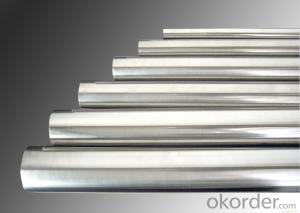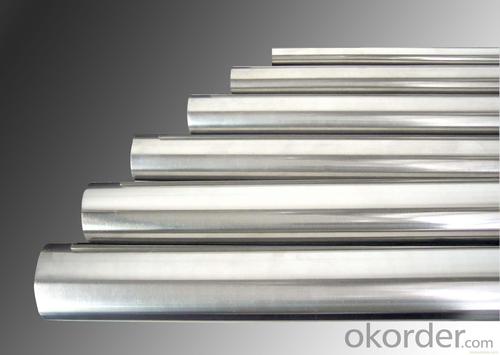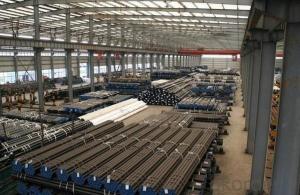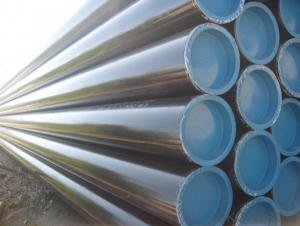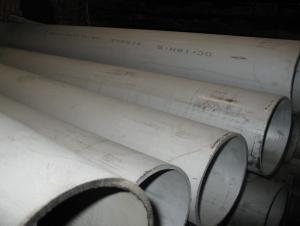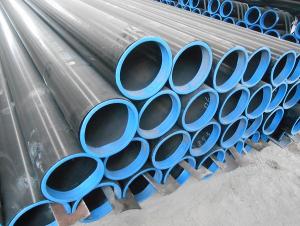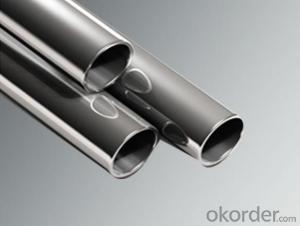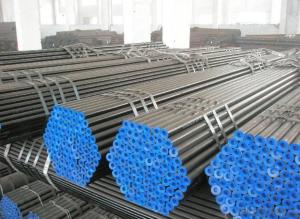Blacked Varnished Hot Rolled High Carbon Seamless Steel Pipe
- Loading Port:
- Tianjin
- Payment Terms:
- TT OR LC
- Min Order Qty:
- 30 m.t.
- Supply Capability:
- 3000 m.t./month
OKorder Service Pledge
OKorder Financial Service
You Might Also Like
Specification
Blacked Varnished Hot Rolled High Carbon Seamless Steel Pipe
1.Structure of Seamless Steel Pipe :
Seamless pipe is formed by drawing a solid billet over a piercing rod to create the hollow shell. As the manufacturing process does not include any welding, seamless pipes are perceived to be stronger and more reliable. Historically seamless pipe was regarded as withstanding pressure better than other types, and was often more easily available than welded pipe.
2.Main Features of the Seamless Steel Pipe :
• Strong heat dissipation ability
• Good visual effect
• Reasonable price
• High manufacturing accuracy
• High strength
• Small inertia resistance
3.Seamless Steel Pipe Specification:
1) Material:20#(ASTM A 106/A53 GRB.API5LGRB,GB),45#,16Mn,10#.
2) Specification range:OD:21.3-610mm,WT:6-70mm,length:6-12m or according to the requirement of clients.
3) Excutive standards:GB,ASME API5L.ASTM A 106/A53,Despite of the above standards,we can also supply seamless steel pipe with standard of DIN,JIS,and so on,and also develop new products according to the requirements of our clients!
Standard | GB, DIN, ASTM ASTM A106-2006, ASTM A53-2007 |
Grade | 10#-45#, 16Mn 10#, 20#, 45#, 16Mn |
Thickness | 8 - 33 mm |
Section Shape | Round |
Outer Diameter | 133 - 219 mm |
Place of Origin | Shandong, China (Mainland) |
Secondary Or Not | Non-secondary |
Application | Hydraulic Pipe |
Technique | Cold Drawn |
Certification | API |
Surface Treatment | factory state or painted black |
Special Pipe | API Pipe |
Alloy Or Not | Non-alloy |
Length | 5-12M |
Outer Diameter | 21.3-610mm |
Grade | 20#, 45#, Q345, API J55, API K55, API L80, API N80, API P110, A53B |
Standard | ASME, ASTM |
4. Application of Seamless Steel Pipe :
Seamless stainless pipe is used for applications that require internal pressure within the pipe such as process equipment, water treatment and marine applications. Welded pipe is used for structural applications that are exposed to corrosive environments such as marine and external applications. These include handrails, poles and support piping.
5.Packaging & Delivery
Packaging Details: | seaworthy package,bundles wrapped with strong steel strip |
Delivery Detail: | 50-60days after received 30%TT or Original LC |
6.Seamless Steel Pipe Images:
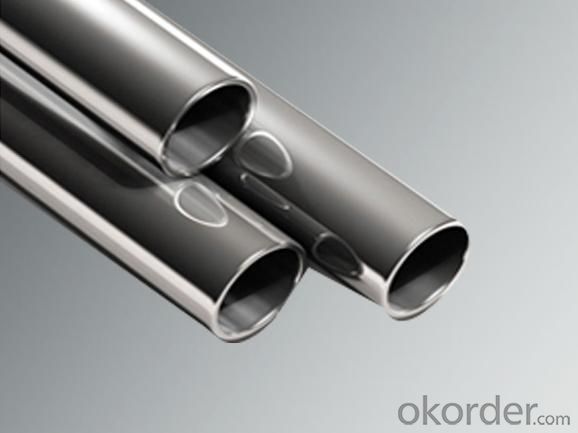
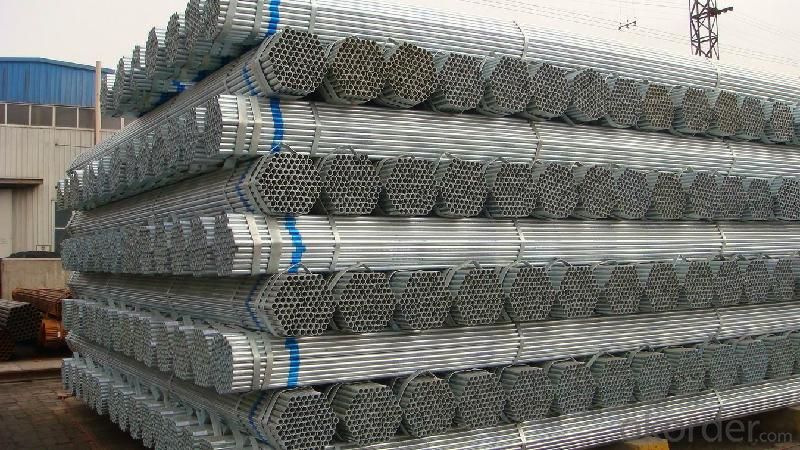
7. Company Information:
Since 2004, the trading volume of CNBM International has been doubled in 5 successive years owing to the support of superior corporations and effort of all staff. Meanwhile, we have established strategic partnerships with hundreds of domestic manufacturers and sound business relations with clients from over 120 countries. Currently, we have wholly-owned overseas subsidiaries and branches in 5 countries with a view to realize localization, which also represents an essential progress in our globalization target.In line with the business, CNBM International launched E-business platform Okorder.com.Our goal is to transform CNBM International into the global leading brand in building materials industry within 3 to 5 years through innovation and reform, by strengthening the overall management of supply chain, developing and cultivating both domestic and overseas market, improving the procedure and information system, enhancing the ability to organize resources and to provide value-added services under a professional team and a learning organization.
- Q: How do steel pipes withstand pressure?
- Steel pipes withstand pressure due to their inherent strength and resilience. The high tensile strength and durability of steel allow it to withstand the internal pressure exerted by fluids or gases flowing through the pipes. Additionally, the thick walls and cylindrical shape of the steel pipes distribute the pressure evenly, preventing any deformation or rupture. The seamless construction of steel pipes further enhances their ability to withstand pressure, making them a reliable choice for various applications in industries such as oil and gas, plumbing, and construction.
- Q: Can steel pipes be used for steam applications?
- Yes, steel pipes can be used for steam applications. Steel pipes are known for their high strength and durability, making them suitable for carrying steam at high temperatures and pressures. They are resistant to corrosion and can withstand the harsh conditions of steam systems, making them a popular choice in various industries such as power generation, oil and gas, and chemical processing.
- Q: How are steel pipes insulated to prevent freezing?
- Steel pipes are commonly insulated to prevent freezing by applying a layer of insulation materials, such as foam or fiberglass, around the pipes. This insulation helps to maintain the temperature of the pipes and prevents heat loss, thus preventing the water inside from freezing during cold weather conditions. Additionally, heat tracing cables can be used along with the insulation to provide an extra layer of protection by supplying heat to the pipes.
- Q: Can steel pipes be used for transporting hazardous materials?
- Yes, steel pipes can be used for transporting hazardous materials. Steel is known for its strength and durability, making it suitable for handling and containing hazardous substances. It is commonly used in various industries, such as oil and gas, chemical, and wastewater treatment, to transport materials that pose a potential risk to human health or the environment. Additionally, steel pipes can resist corrosion and high pressure, ensuring the safe transportation of hazardous materials.
- Q: What is the difference between ERW (Electric Resistance Welded) and LSAW (Longitudinal Submerged Arc Welded) steel pipes?
- ERW (Electric Resistance Welded) steel pipes are manufactured by passing an electric current through the steel strip or plate to generate heat, which results in the fusion of the edges together to form a pipe. On the other hand, LSAW (Longitudinal Submerged Arc Welded) steel pipes are produced by submerging the steel plate or strip into a molten bath of welding flux and then initiating the welding process. The main difference between ERW and LSAW steel pipes lies in their manufacturing processes and the resulting pipe structure. ERW pipes have a longitudinal seam along their length, created by the fusion of the edges, while LSAW pipes have a single longitudinal seam that is formed by the submerged arc welding process. This difference in welding techniques gives LSAW pipes a higher degree of dimensional accuracy and stability, making them suitable for applications that require precise measurements and strong structural integrity. Additionally, LSAW pipes have a larger diameter range and can be produced in larger sizes compared to ERW pipes. This makes LSAW pipes well-suited for conveying large volumes of fluid or gas, such as in oil and gas pipelines. Conversely, ERW pipes are commonly used in applications that require smaller sizes and lower pressure requirements, such as water supply systems or structural applications. In summary, the main differences between ERW and LSAW steel pipes lie in their manufacturing processes, resulting pipe structure, size capabilities, and applications.
- Q: How are steel pipes used in plumbing?
- Steel pipes are commonly used in plumbing applications due to their durability, strength, and resistance to corrosion. They are used to transport water, gas, and other fluids from one place to another in a plumbing system. Steel pipes are often found in underground water supply networks, as well as in buildings for conveying hot and cold water, drainage, and venting systems. Additionally, steel pipes are also utilized for connecting fixtures, such as sinks, showers, toilets, and appliances, ensuring a reliable and long-lasting plumbing infrastructure.
- Q: Can steel pipes be used for conveying slurries or abrasive materials?
- Yes, steel pipes can be used for conveying slurries or abrasive materials. Steel pipes are known for their durability and resistance to wear and tear, making them suitable for handling abrasive substances. Additionally, their smooth interior surface reduces friction, preventing clogging and ensuring efficient flow of slurries or abrasive materials.
- Q: What are the different types of steel pipe valves?
- There are several different types of steel pipe valves that are commonly used in various industries and applications. Here are some of the most common types: 1. Gate valves: These valves are designed to control the flow of fluid by lifting or lowering a gate or wedge that obstructs the flow path. They provide a tight seal when closed and are commonly used in applications that require a full flow or complete shut-off. 2. Globe valves: Globe valves have a globe-shaped body and a movable plug or disc that regulates the flow of fluid. They offer good throttling capabilities and are used in applications where precise control of flow is required. 3. Ball valves: Ball valves use a rotating ball with a hole in it to control the flow of fluid. When the hole is aligned with the pipe, the valve is fully open, and when the hole is perpendicular to the pipe, the valve is closed. Ball valves are durable, reliable, and commonly used in applications that require quick and easy shut-off. 4. Check valves: Check valves allow fluid to flow in only one direction and prevent backflow. They are often used to prevent damage to pumps, compressors, and other equipment by preventing reverse flow. 5. Butterfly valves: Butterfly valves have a disc that rotates within the pipe to control the flow of fluid. They are lightweight, compact, and offer a quick shut-off. Butterfly valves are commonly used in large-scale applications such as water treatment and HVAC systems. 6. Plug valves: Plug valves have a cylindrical or conical plug that rotates within the valve body to control flow. They are simple in design, easy to operate, and offer reliable shut-off capabilities. Plug valves are commonly used in applications that require frequent operation and high pressure ratings. 7. Diaphragm valves: Diaphragm valves use a flexible diaphragm to control the flow of fluid. When the diaphragm is pressed against the valve seat, the flow is blocked, and when the diaphragm is lifted, the flow is allowed. Diaphragm valves are commonly used in applications that require a sterile or hygienic environment. These are just a few examples of the different types of steel pipe valves available in the market. The choice of valve depends on the specific application requirements, such as flow rate, pressure, temperature, and the type of fluid being transported.
- Q: What are the different methods of cutting steel pipes?
- The different methods of cutting steel pipes include using a hacksaw, pipe cutter, angle grinder with a cutting disc, reciprocating saw, plasma cutter, or oxy-fuel torch.
- Q: How are steel pipes used in geothermal energy systems?
- Steel pipes are an essential component in geothermal energy systems as they are used to transport the hot water or steam extracted from the underground reservoirs to the surface. These pipes are designed to withstand high temperatures and pressure, ensuring the safe and efficient transfer of geothermal fluids. Additionally, steel pipes are also utilized in the construction of geothermal power plants, connecting various components like heat exchangers and turbines, facilitating the generation of renewable and sustainable energy.
Send your message to us
Blacked Varnished Hot Rolled High Carbon Seamless Steel Pipe
- Loading Port:
- Tianjin
- Payment Terms:
- TT OR LC
- Min Order Qty:
- 30 m.t.
- Supply Capability:
- 3000 m.t./month
OKorder Service Pledge
OKorder Financial Service
Similar products
Hot products
Hot Searches
Related keywords
